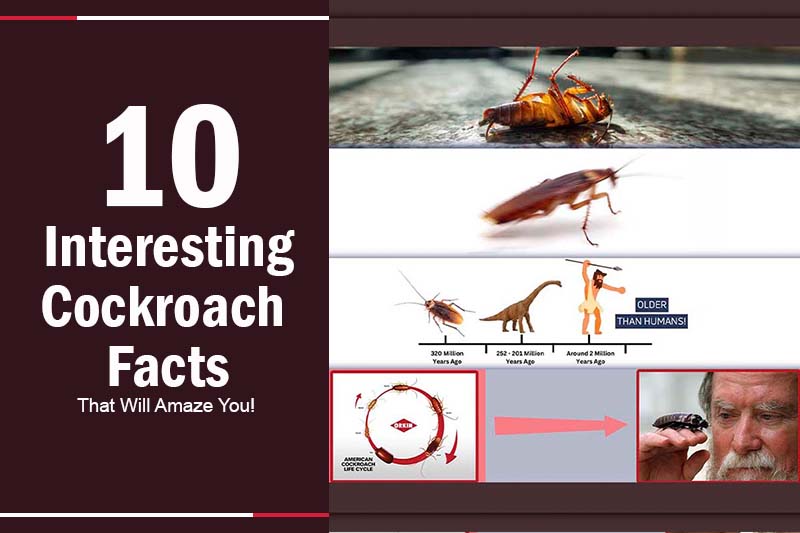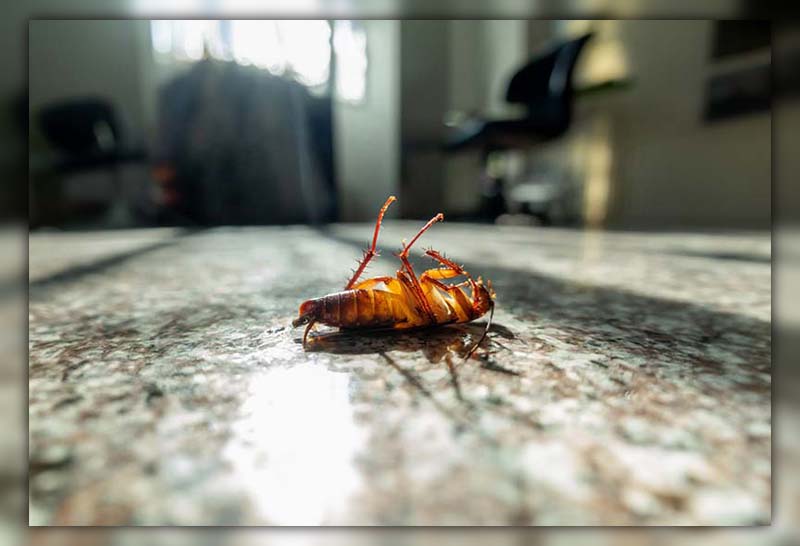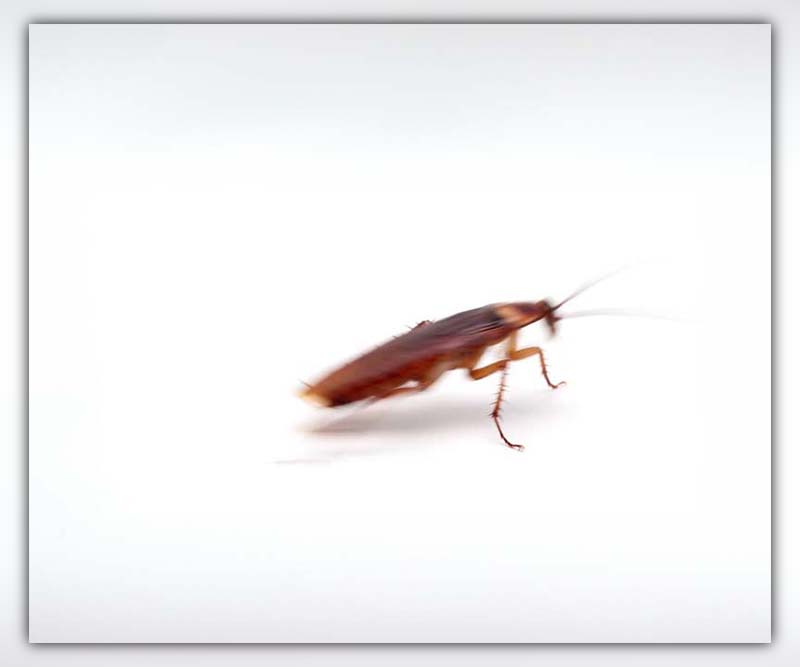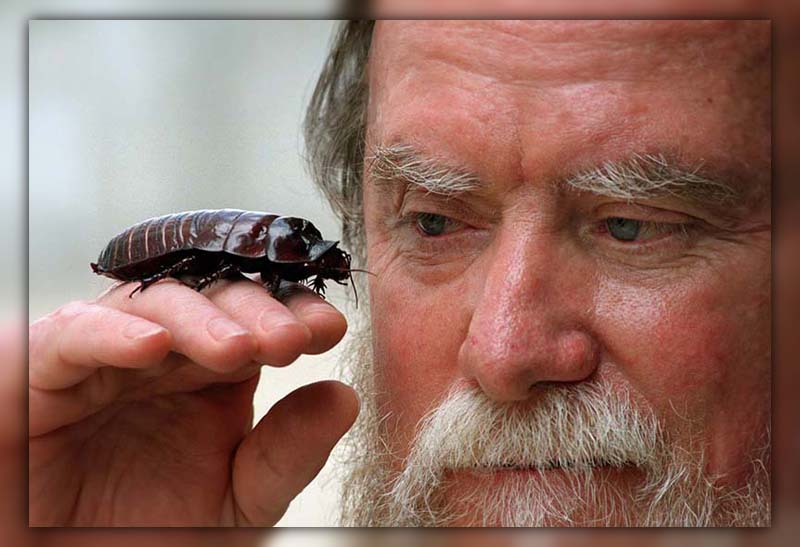Whether you’re dealing with a bunch of them in your house or you’re just curious about these old-school insects, we’ve got some cool cockroach facts for you.
Get ready for a deep dive into the fascinating world of cockroaches.
We’re going to uncover some truths that might just make you see these little pests in a whole new light!

10 Cockroach Fun Facts
Cockroaches without head can live for a week
Thanks to their open circulatory system and tiny breathing tubes located throughout their body segments, cockroaches aren’t reliant on their head or mouth to breathe.
However, they meet their end because without a mouth, they can’t hydrate themselves and eventually succumb to dehydration.

A cockroach can remain without breathing for up to 40 minutes
Cockroaches can hold their breath for an astonishing 40 minutes and even endure being submerged underwater for about 30 minutes.
This unique ability helps them manage their water loss.
>> Read more: Surinam Cockroach in house: Your Guide to a Pest-Free Garden
A cockroach can achieve speeds of up to three miles per hour
While their top speed of three miles per hour might not sound like much, in pest terms, it allows them to disperse bacteria and pathogens around a residence with surprising efficiency.

German cockroaches reach adulthood in just 36 days
German cockroaches, one of the most prevalent species, mature into adulthood in just over a month, at 36 days.
Their rapid life cycle contributes to their success as a household pest.
A one-day-old cockroach nymph can run almost as fast as its parents
A cockroach nymph, just a day old and roughly the size of a dust speck, can scurry almost as swiftly as its full-grown counterparts.
This agility, combined with their diminutive size, makes them adept at spreading various illnesses.
American cockroaches have shown an attraction to alcohol
Interestingly, American cockroaches have displayed a fondness for alcoholic beverages, particularly beer.
The sugars and hops in the drink are believed to be what entices them.
The world’s largest cockroach measures a whopping 6 inches in length
The world’s largest cockroach species, found exclusively in South America, can grow up to 6 inches long.
To put that into perspective, that’s about 3 to 12 times the length of average cockroaches.
Plus, it boasts a wingspan of an entire foot!

Cockroaches have been around for a very long time
Cockroaches are old-timers on this planet.
They’re believed to have made their first appearance over 280 million years ago during the Carboniferous period.

There are over 4,000 distinct cockroach species worldwide
Over 4,000 unique cockroach species have been identified worldwide.
While the German cockroach is the most prevalent, in America, you might also encounter the brown-banded, American, and oriental cockroach.
>> Read more: Brown Banded Cockroaches: Habits, Looks & Control Tips.
How long can a cockroach live without food or water?
Being cold-blooded insects, cockroaches can endure extended periods without food.
However, they have their limits when it comes to water, surviving only a week without it.
This hydration-seeking behavior is why they’re often found lurking in moist places like bathrooms and basements.
Questions commonly asked about cockroaches
Are all cockroaches harmful pests?
Not necessarily. While the very mention of “cockroach” might make some people squirm, only about 1% of cockroach species are viewed as pests.
Out of the thousands of species out there, only about 30 have a bad reputation.
The culprits usually found in U.S. homes include the American, German, Oriental, and brown-banded cockroaches.
>> Read more: Oriental Cockroach: Facts and Prevention for Homeowners.
Can a cockroach survive a nuke?
This is a popular urban myth, but cockroaches aren’t nuclear-proof.
While they can endure radiation levels up to 10 times more than humans, they wouldn’t survive a nuclear explosion.
Fortunately, there are more practical methods to manage them.
Source: The Infographics Show
Did cockroaches coexist with dinosaurs?
Absolutely! These resilient creatures have been around for quite a while.
It’s estimated that cockroaches have been scurrying the Earth for at least 200 million years.
Considering we have roach fossils from about 350 million years ago, they even walked (or rather, scuttled) before some dinosaurs.
Can cockroaches worsen my allergies?
Sadly, this is true.
Cockroaches release certain proteins that might trigger sensitivities, especially in individuals with asthma.
Moreover, their droppings, decaying molted skins, and the bacteria they carry can further exacerbate allergies and even lead to diseases if they come into contact with food or common household surfaces.
Do cockroaches really eat anything in sight?
They sure do have a diverse diet.
Cockroaches aren’t picky eaters – they’ll munch on plants, our food, shed skin cells, trash, and, a bit unpleasantly, even feces.
Is it true that cockroaches like beer?
Some might joke that roaches are just trying to enjoy a cold one, but in reality, certain roaches are attracted to alcoholic beverages like beer.
The likely culprits are the sugars in the drink, rather than a penchant for partying.
Is there any place on Earth where you won’t find a cockroach?
If you’re looking to live in a roach-free zone, pack your bags for Antarctica.
Cockroaches have made homes on every continent except for this icy one.
Their adaptability is commendable, but even they have limits.
Conclusion
In wrapping up, the world of cockroaches is more intriguing than one might initially think.
These “Cockroach facts” have unveiled the resilience, adaptability, and ancient history of these ubiquitous pests.
If your curiosity is now piqued, don’t stop here! Dive deeper into our treasure trove of insights over at Pestweek.

Calina Mabel has over 15 years of experience in the field of journalism and communications. Currently, Calina Mabel is the Content Writer for categories such as Cockroach, Ants, Bed Bugs, Mosquito, Rodent, Termite, and Flies on Pestweek.com. She aims to build content for these categories with a focus on providing valuable and accessible information to readers, in order to create the world’s largest knowledge community about Pests.
All content written by Calina Mabel has been reviewed by Emily Carter.

